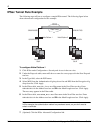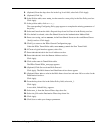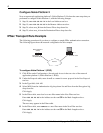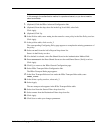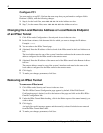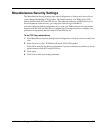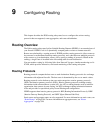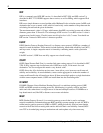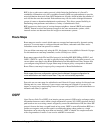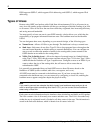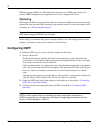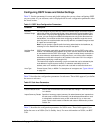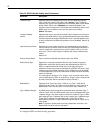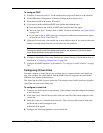
9
352 Nokia Network Voyager for IPSO 4.0 Reference Guide
RIP
RIP is a commonly used IGP. RIP version 1 is described in RFC 1058, and RIP version 2 is
described in RFC 1723. IPSRD supports these version, as well as RIPng, which supports IPv6
interfaces.
RIP uses a simple distance vector algorithm called Bellman Ford to calculate routes. In RIP, each
destination has a cost or metric value, which is based solely on the number of hops between the
calculating firewall and the given destination.
The maximum metric value is 15 hops, which means that RIP is not suited to networks within a
diameter greater than 15 firewalls. The advantage of RIP version 2 over RIP version 1 is that it
supports non-classful routes. Classful routes are old-style class A, B, C routes. You should use
RIP version 2 instead of RIP version 1 whenever possible.
IGRP
IGRP (Interior Gateway Routing Protocol) is a distance vector protocol. IGRP has a number of
metrics for each destination. These metrics include link delay, bandwidth, reliability, load, MTU,
and hop count. A single composite metric is formed by combining metrics with a particular
weight.
Like RIP version 1, IGRP does not fully support non-classful routing.
OSPF
OSPF (Open Shortest Path First) is a modern link-state routing protocol. It is described in RFC
2328. It fully supports non-classful networks. OSPF has a single, 24-bit metric for each
destination. You can configure this metric to any desired value.
OSPF allows the AS to be broken up into areas. Areas allow you to increase overall network
stability and scalability. At area boundaries, routes can be aggregated to reduce the number of
routes each firewall in the AS must know about. If there are multiple paths to a single destination
with the same computed metric, OSPF can install them into the forwarding table.
DVMRP
DVMRP (Distance Vector Multicast Routing Protocol) is a multicast routing protocol (RIP,
OSPF, and IGRP are unicast routing protocols). Multicasting is typically used for real-time
audio and video when there is a single source of data and multiple receivers. DVMRP uses a
hop-based metric and, like RIP, a distance-vector route calculation.
BGP
BGP (Border Gateway Protocol) is an exterior gateway protocol that is used to exchange
network reachability information between BGP-speaking systems running in each AS. BGP is
unlike interior gateway protocols (IGRP or OSPF), which periodically flood an intra-domain
network with all the known routing table entries and build their own reliability. Instead, BGP
uses TCP as its underlying transport mechanism and sends update only when necessary.



